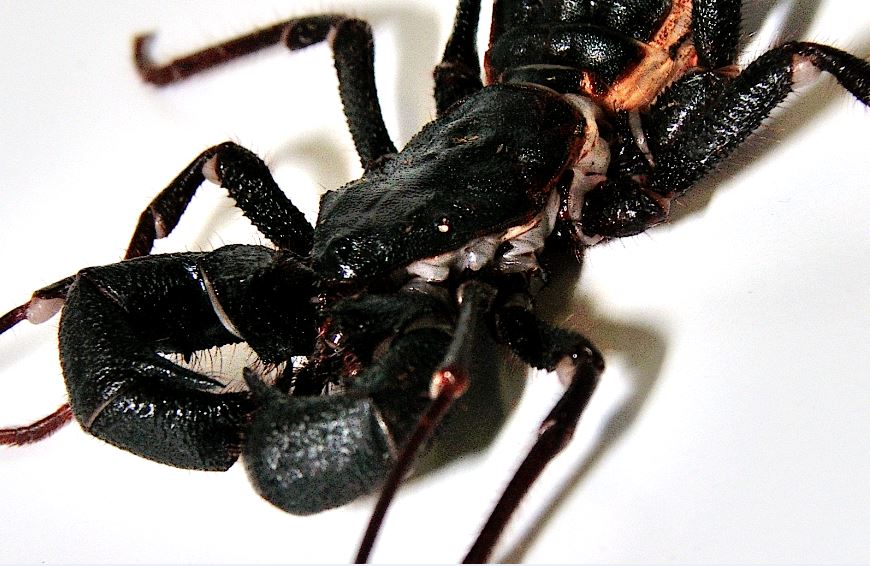Alerts
Please be advised that our bird aviaries are open!
Your Toronto Zoo is committed to the health and safety of the animals in our care. We take proactive steps to protect our birds from Avian Influenza which has been confirmed in a wild bird in southern Ontario, and some birds may still be off display.
Please note Splash Island is still closed and will not open until July due to unforeseen delays in construction. Please watch for updates on https://www.torontozoo.com/tz/splash or on our social media pages. Thank you!
Please note the following animals are currently not on display due to various reasons including Avian Bird Flu, and Covid-19 sensitivity:
- Flamingo, peacock, owl, bald eagle, and aviaries
- Some Kids Zoo Animals
- Cougar
- Moose
- Kangaroo walk through (kangaroos are still visible)
- Axolotl
We apologize for the inconvenience!


Arachnid
Location at the Zoo:
Americas
Region: South America
Vinegaroon
There are at least 140 species of whip scorpions. This species is known as the vinegaroon. It lacks a scorpion’s stinger; in its place is a long, whip-like tail curled forward over its back and used as a sensory organ. It is approximately 75-80 mm in length and may be reddish or brownish black in colour. It has eight eyes; two in the middle, and three on either side of the head. There are four pairs of legs, although the first pair are held forward and are used primarily as sensing organs, similar to the antennae of other arthropods. The chelicerae (mouth parts) are prominent and form pincers used for both food acquisition and defence. Females usually have wider bodies and smaller pedipalps than the males.Conservation Status: IUCN

Distribution:
Southern and southwestern USA and Mexico.Habitat:
Vinegaroons are commonly found in oak and scrub habitats. They also occur in desert areas among debris, under rotting wood and logs, as well as in grassland, pine forests, and mountains.Diet:
They are carnivores, feeding on arthropods, slugs, and worms. They are known to eat baby vertebrates (lizards and snakes).Reproduction:
During reproduction, the male will deposit a spermatophore (a sperm sac) on the ground before inviting the female over it. The female recovers the sac and the eggs are fertilized. She will then produce 20-35 eggs wrapped in a sac which she carries under her abdomen. As with true scorpions, after the eggs hatch, the colourless offspring will ride on the mother’s back for protection until their first moult.Adaptation:
The vinegaroon gets its name from one of its defence mechanisms. When threatened, it sprays a vinegar-scented, acetic acid mixture from glands located at the base of its telson (or tail). This spray is capable of stinging or burning potential predators.The vinegaroon is nocturnal and has poor eyesight, despite its eight eyes. It senses vibrations created by the movement of other animals.
It has a hard, protective exoskeleton. The chelicerae (mouth parts) are not only used for catching and eating food but they are also an effective defence mechanism, delivering a painful pinch when necessary.